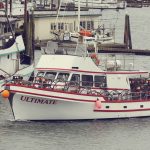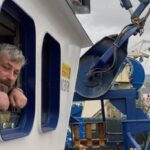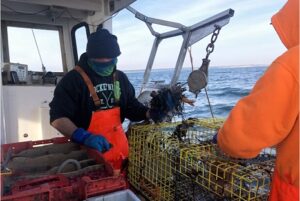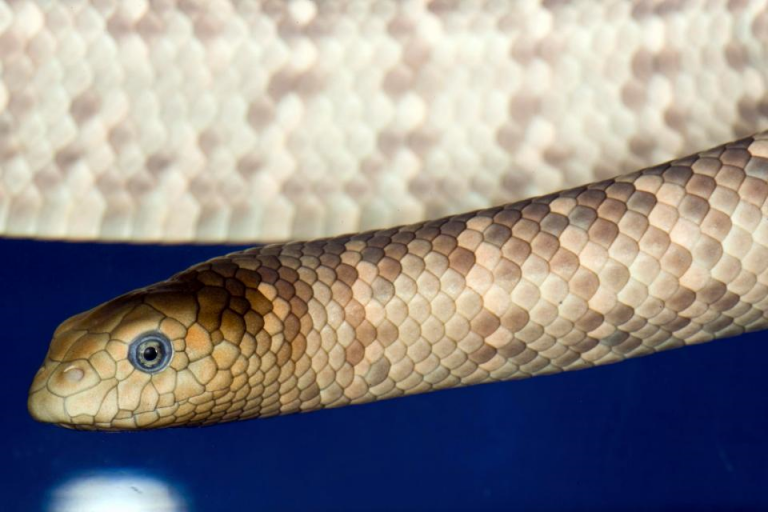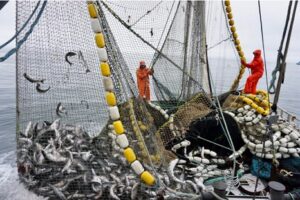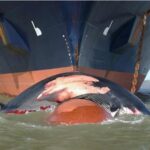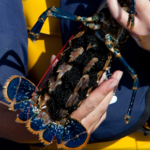Tag Archives: harmful algal blooms
Warming waters in Casco Bay are driving herring farther from shore
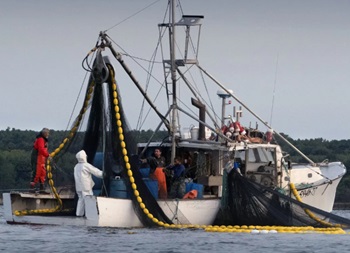 The Gulf of Maine is warming three times faster than the average global ocean, driving some cold-water species like Atlantic herring, the preferred lobster bait — farther away from its shoreline spawning habitat earlier than usual and attracting species from warmer southern waters, including blue crab and black sea bass, a new survey found. The warmth is stressing some of Maine’s keystone fisheries, according to the Gulf of Maine Research Institute’s report on the Casco Bay ecosystem released recently. The report is the first time the institute took a longer, 10-year look at the pace of environmental changes and their effects on ecosystems close to shore. It found that warming waters related to climate change, along with human activities, ocean acidification and harmful algal blooms, are causing different behaviors in species that could hinder their ability to reproduce and thrive. more, >>CLICK TO READ<< 09:52
The Gulf of Maine is warming three times faster than the average global ocean, driving some cold-water species like Atlantic herring, the preferred lobster bait — farther away from its shoreline spawning habitat earlier than usual and attracting species from warmer southern waters, including blue crab and black sea bass, a new survey found. The warmth is stressing some of Maine’s keystone fisheries, according to the Gulf of Maine Research Institute’s report on the Casco Bay ecosystem released recently. The report is the first time the institute took a longer, 10-year look at the pace of environmental changes and their effects on ecosystems close to shore. It found that warming waters related to climate change, along with human activities, ocean acidification and harmful algal blooms, are causing different behaviors in species that could hinder their ability to reproduce and thrive. more, >>CLICK TO READ<< 09:52
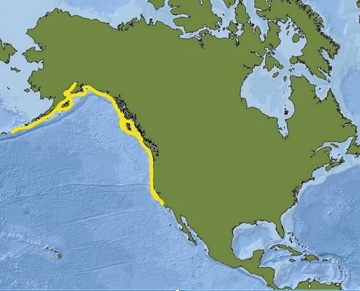
Dungeness crab die-off underway along US West Coast
An important species of crab found primarily along the West Coast is fighting off a combination of stressors that experts at the North Atlantic and Atmospheric Administration say has fishermen finding piles of dead shellfish, and the impacts are affecting the economy. Dungeness crabs are typically found along water beds, and their harvest can be worth a quarter-billion dollars annually. NOAA Fisheries believes the combination of a lack of oxygen, harmful algal blooms, water temperatures and ocean acidification are playing a role in the animal’s disappearance. >click to read< 16:12
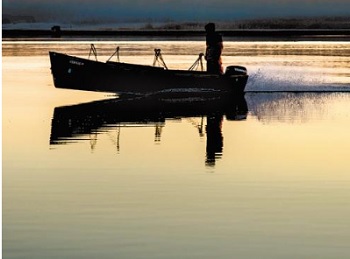
In the Peconic Estuary, A Perfect Storm Hits Bay Scallops
Warming water temperatures, hypoxia (a deficiency in oxygen), ocean acidification, and harmful algal blooms, said Christopher Gobler of Stony Brook University’s School of Marine and Atmospheric Sciences, are each a stressor to the bivalve and local delicacy. The occurrence of more than one at one time, he said, may be responsible for the die-off (may be) ,,, The bay scallop fishery is “notorious for booms and busts,” Stephen Tettelbach, >click to read< 08:04
A collaborative approach to Chesapeake Bay restoration
Today, pollution threatens all of the recent progress we’ve made at cleaning up the Chesapeake Bay. At risk is not only the ecosystem’s survival, but also a way of life for so many. Despite successful pollution reduction efforts, excessive nitrogen, phosphorus and sediment from runoff also still contribute to harmful algal blooms, “dead zones” and loss of underwater grasses. continued @ tidewaternews.com



































